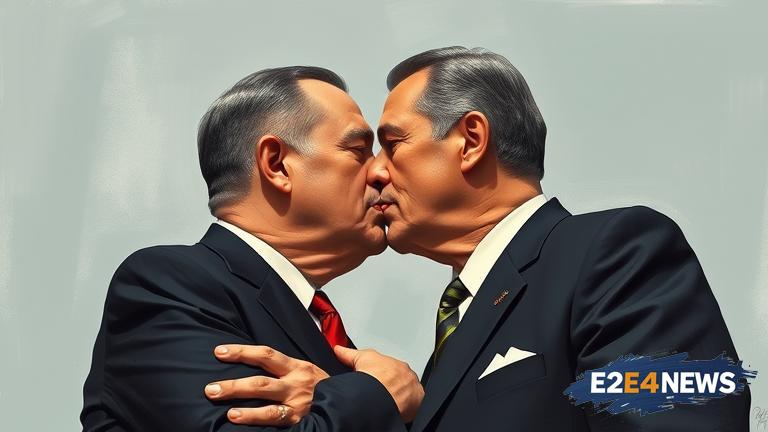The Brezhnev kiss, as it came to be known, was a gesture of friendship and solidarity between Soviet leader Leonid Brezhnev and East German leader Erich Honecker. The kiss took place in 1979, during a ceremony in East Berlin, and was seen as a symbol of the close relationship between the two communist nations. Brezhnev’s kiss was not just a spontaneous gesture, but a carefully calculated move to strengthen ties between the Soviet Union and its Eastern European allies. The kiss was also seen as a way for Brezhnev to assert his dominance and influence over the Eastern Bloc. The gesture was widely covered in the media, with many interpreting it as a sign of the Soviet Union’s growing influence in Europe. However, not everyone was impressed by the kiss, with some seeing it as a sign of weakness and a lack of dignity. Despite the criticism, the Brezhnev kiss remains an iconic moment in the history of Soviet diplomacy. Brezhnev’s approach to international relations was characterized by a mix of charm, charisma, and calculation. He was known for his ability to build relationships with other world leaders, often using gestures like the kiss to break the ice and establish trust. The kiss was also a reflection of the Soviet Union’s growing economic and military power, as well as its increasing influence in global affairs. As the Soviet Union’s leader, Brezhnev was determined to assert his nation’s dominance on the world stage, and the kiss was just one of many gestures he used to achieve this goal. The Brezhnev kiss has also been seen as a symbol of the Soviet Union’s attempts to create a sense of community and solidarity among its Eastern European allies. The gesture was part of a broader effort to promote socialist unity and cooperation, and to counter the influence of Western powers. Despite the eventual collapse of the Soviet Union, the Brezhnev kiss remains an important moment in the history of international relations. It highlights the complex and often contradictory nature of Soviet diplomacy, which combined elements of charm, coercion, and calculation. The kiss also reflects the enduring legacy of Soviet leader Leonid Brezhnev, who remains one of the most fascinating and complex figures in modern history. Brezhnev’s approach to diplomacy was shaped by his experiences as a Soviet leader, as well as his own personality and character. He was known for his ability to think strategically and to calculate the potential consequences of his actions. The Brezhnev kiss was just one of many gestures he used to achieve his goals, and it remains an important part of his legacy. In conclusion, the Brezhnev kiss was a significant moment in the history of Soviet diplomacy, reflecting the complex and often contradictory nature of Soviet international relations. It highlights the importance of charm, charisma, and calculation in building relationships between nations, and the enduring legacy of Soviet leader Leonid Brezhnev. The kiss also serves as a reminder of the Soviet Union’s attempts to create a sense of community and solidarity among its Eastern European allies, and its efforts to promote socialist unity and cooperation. As such, the Brezhnev kiss remains an important and fascinating topic of study, offering insights into the complexities of Soviet diplomacy and the enduring legacy of one of the 20th century’s most influential leaders.





